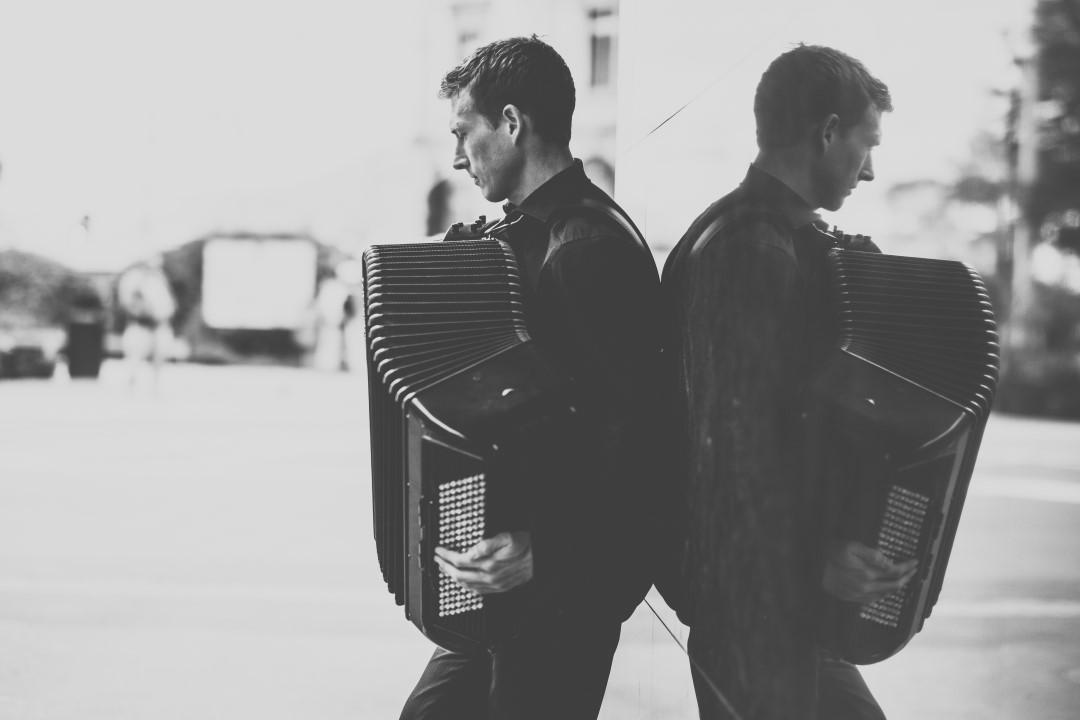Interviews - 20.07.2022
A family business
"I always had the choice from my mother: I could learn any instrument as long as I learned the accordion as well." ~ Grayson Masefield

Some things run in the family and, for Grayson Masefield, that happens to be the accordion.
Beginning with his grandfather, his family has been in Aotearoa New Zealand’s accordion import business for three generations. “I always had the choice from my mother: I could learn any instrument as long as I learned the accordion as well,” Grayson said.
He has gone on to become the first person to win World Championships in Classical, Virtuoso, and Digital accordion categories. This July, he’ll be joining Christchurch Symphony Orchestra in performing Osvaldo Golijov’s Azul, which also incorporates cello, played by acclaimed UK cellist Matthew Barley, and a variety of ‘found’ percussion instruments played by Aotearoa New Zealand percussionists Brett Painter and Douglas Brush. It’s the first time that Grayson’s performed with a New Zealand orchestra, and he finds this exciting.
“I’ve been able to play with orchestras in France, Switzerland, Chile, America, Canada, China; the opportunity comes up but, mostly, my job is as a soloist. I’ve been really lucky to travel around the world, playing at all sorts of levels and venues,” he said.
“There’ve been amazing festivals in China when it would just be packed, and they’d rush you and mob you for autographs. It’s also amazing to play in Chile with their symphony orchestra in Frutillar, where the concert venue, Teatro del Lago, is actually over the lakes. I’ve just had a lot of fun concerts in great places.”
He’d been living and working overseas for a decade and had just moved back to New Zealand before the the first Covid-19 lockdown in 2020.
Grayson says that performing isn’t about the instrument. “Performance is performance. That’s fun, that’s engaging, and it can be on any instrument. I just happen to play the accordion,” he said.
People were often surprised by what the accordion can do. “First thing most people say, if they come up to me after a concert, is: ‘I didn’t know you could do that’.
“There’s a huge variety of genres and styles that we can get away with. Because it’s a completely polyphonic instrument, you can have your standard oom-pah-pah base or we have what we call a ‘free-bass’ instrument where all the buttons on the left hand side are now individual notes. So we can play Bach’s organ repertoire, his passacaglias, and his chaconnes. It’s really diverse.”
Grayson explained that accordions have a lot of stereotypes associated with them because of how quickly the instrument spread around the world ever since it was patented in 1826. “Being a fixed reed instrument and quite loud, everything else had to tuned to the accordion,” he said.
The accordion quickly became a staple in the folk music traditions across Europe, both Americas, and elsewhere in the world because it was a fixed-tune instrument. The first accordions were limited in what they could do compared to modern instruments.
“Now we have a concert instrument with 45 keys or more on the right hand, and a bass range of five octaves on the left hand, but that’s only been developed over the past 70 years. What everyone thinks of the accordion had already been established. They don’t know that the modern accordion can do all these things.”